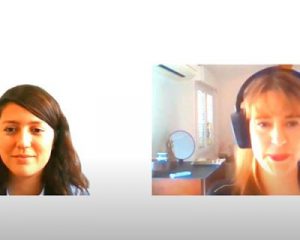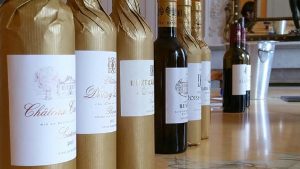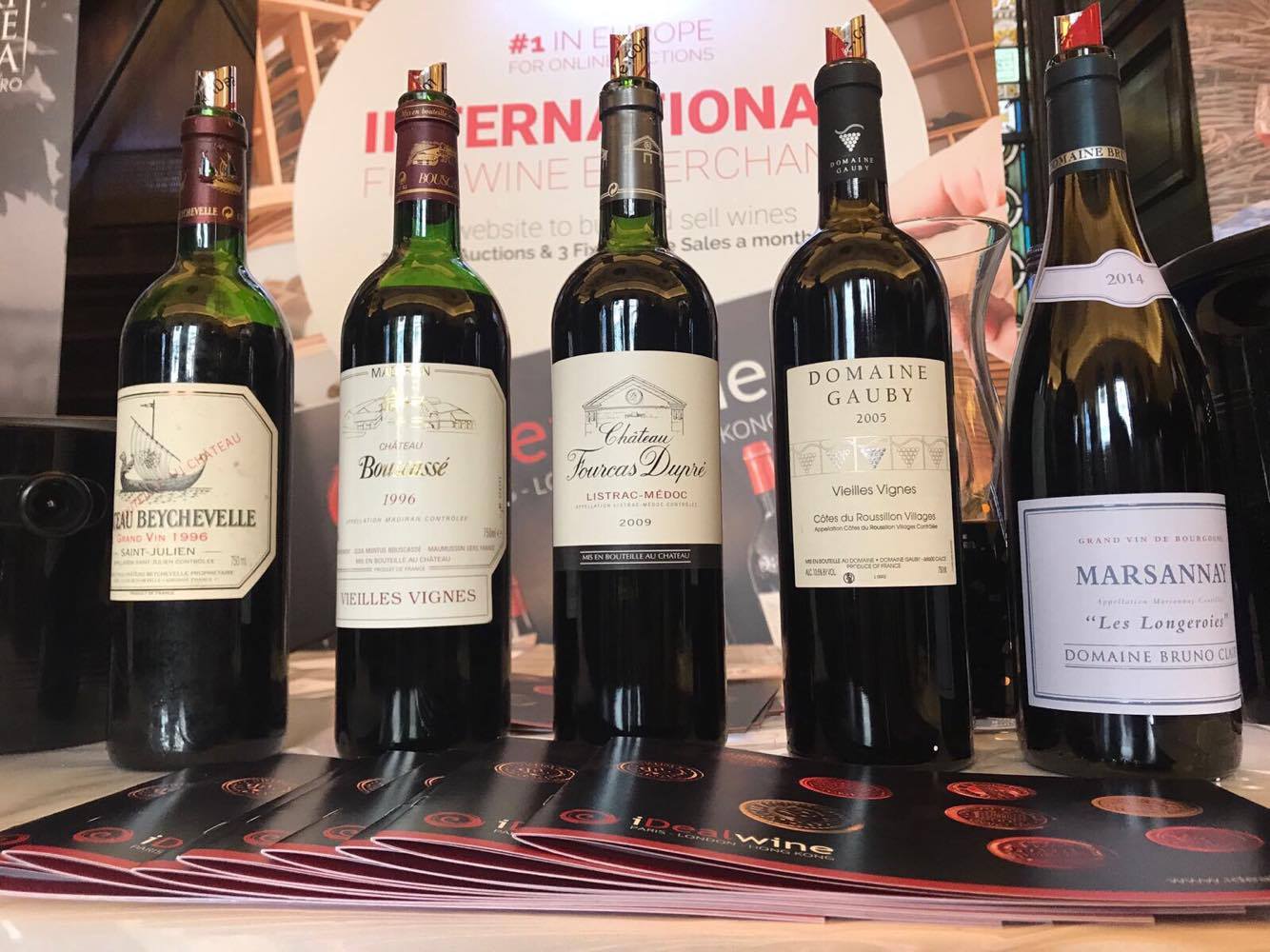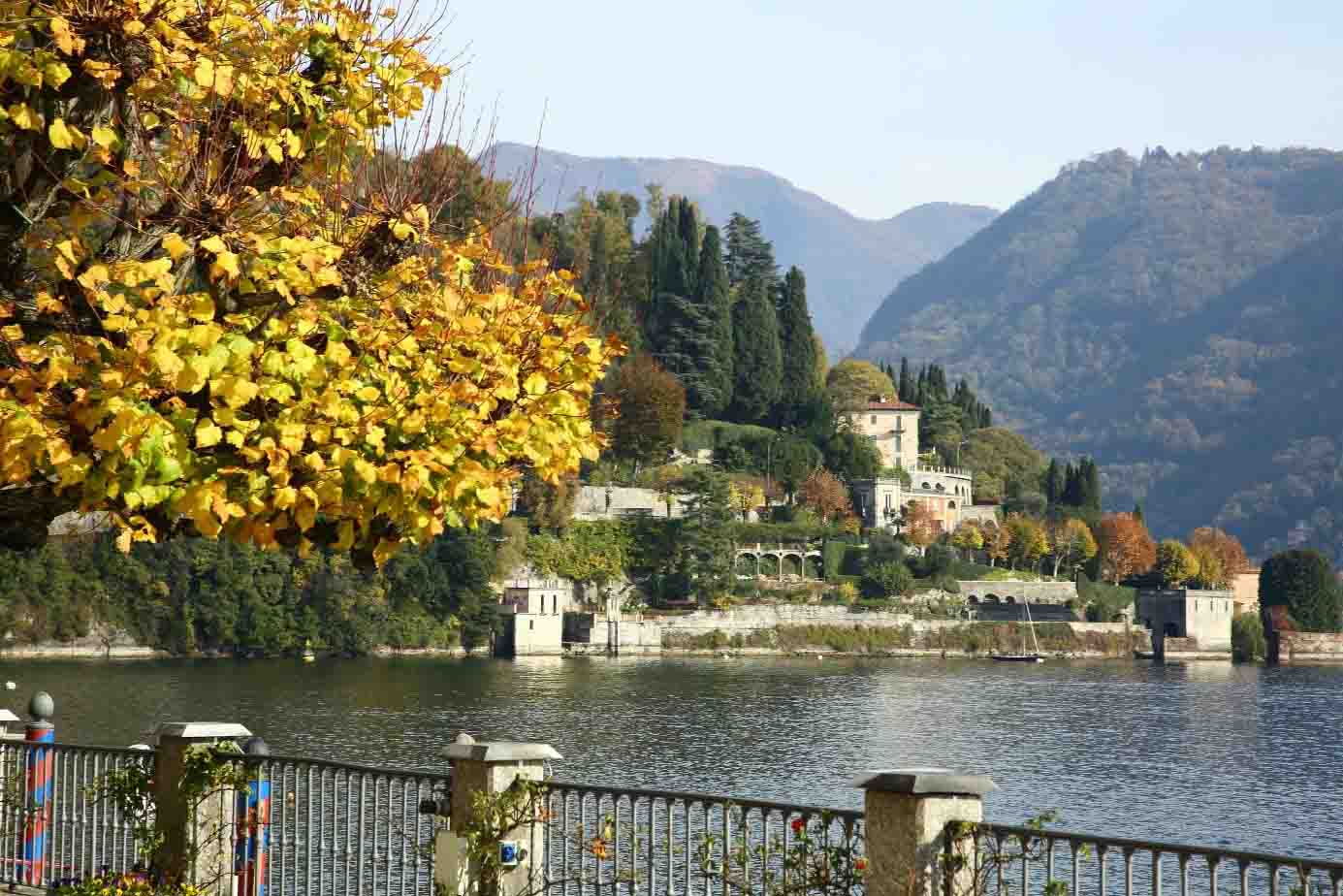 Spend time on the shores of Lake Como, taste incredible wines, meet great wine figures, passionate connoisseurs and talented tasters, equally humble and smart… the story of 3 days suspended at the Villa d’Este between conferences, tastings and haute cuisine.
Spend time on the shores of Lake Como, taste incredible wines, meet great wine figures, passionate connoisseurs and talented tasters, equally humble and smart… the story of 3 days suspended at the Villa d’Este between conferences, tastings and haute cuisine.
The world of fine wines is fascinating because it is sometimes associated to the elegance of great moments in life. The Villa d’Este offers an incomparable setting, and welcomes each year since 2008 what insiders call the VDEWS (for Villa d’Este Wine Symposium). An almost intimidating name, heralding a high level programme concocted by François Mauss (European Grand Jury). Winemakers, enthusiasts and researchers from all over the world gather to Cernobbio as the lake is wrapped in its autumn colours and slowly falls asleep for a winter’s time.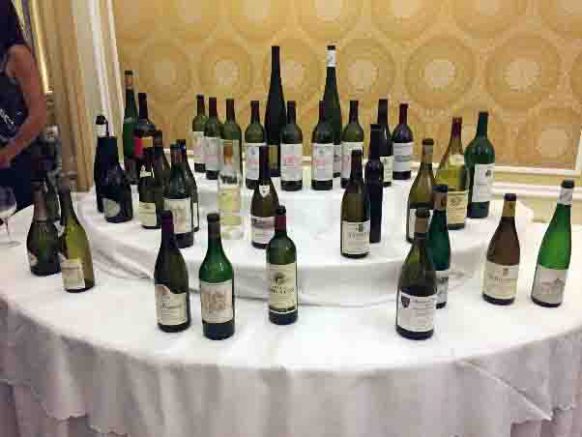
The session begins for me with a joyful Paulée (lunch that traditionally puts an end to the harvests), judiciously positioned in the programme to encourage the first conversations between participants. At my table, two cultures coexist and face each other, several couples of Monegasque enthusiasts talk with American promoters of the Vivino app. The temperature rises quickly, as Champagne Ruinart Rosé flows, and the tension goes up a notch when a bottle of Château Yquem 1995 appears in the hands of Heini Zacharassien (the creator of the app). A festival of bottles is quickly organized in the veranda, we see wonderful bottles pass, we smell a lot, taste a few drops here and there. Frédéric Panaïotis, the cellar master of the Ruinart house (and an excellent taster) has no equal to find treasures and share them (Leflaive, Dujac…), thank you Fred! All these exquisite empty bottles end with dignity the evening, set as trophies at the entrance of a restaurant that has become completely untidy, despite the laudable attempts of the butlers to maintain a kind of order.
Environmental concerns at the heart of the Symposium
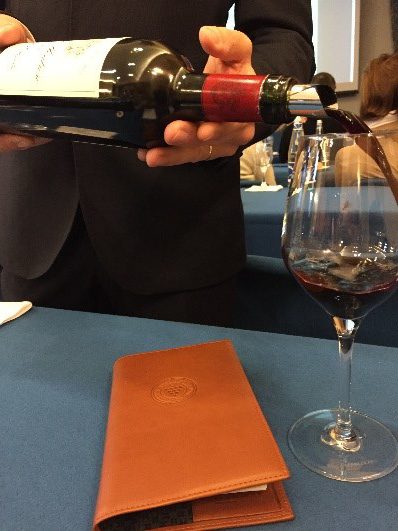 On the next day, we concentrated on serious issues. The day started with a round table debate on wine inputs. Professor David Khayat discusses the recent progress and conclusion of studies from the United States, and the state of research to establish a link between alcohol and cancer. The recommendations of the ASCO (American Society of Clinical Oncology) have the force of law, it is important to react because the issue in terms of communication is immense. If for the famous French oncologist, the inputs are only present as residual traces in the wine, the people who handle these products risk a lot and must be protected. A reliable warning to prevent the confusion made between the risk of diseases caused by the use of phytosanitary treatments – established link – and the potential danger of drinking wine. This confusion is disastrous for the image consumers have of the sector. The Jadot house, very committed to an eco-friendly approach, has just obtained the label of High Environmental Value and stresses the importance of such an approach for the villages and the population surrounding the vineyards. Several producers (Egon Muller, Antinori) point out the dilemma they are confronted to when using copper (a treatment used by organic winemakers), instead of using chemicals: which one of them is preferable for nature, for consumers? The consultant Stéphane Derenoncourt, who never hesitates to tackle sensitive issues, does not resist the temptation to emphasize that general outcry from consumers is salutary, and therefore desirable; because if great wines are able to enhance the quality of their production, for low-end wines the lack of communication on the products used – supported by the lobbying of the input companies – constitutes a danger for the consumer. A desirable change or a predictable rejection? The answer is in the hands of the producers themselves.
On the next day, we concentrated on serious issues. The day started with a round table debate on wine inputs. Professor David Khayat discusses the recent progress and conclusion of studies from the United States, and the state of research to establish a link between alcohol and cancer. The recommendations of the ASCO (American Society of Clinical Oncology) have the force of law, it is important to react because the issue in terms of communication is immense. If for the famous French oncologist, the inputs are only present as residual traces in the wine, the people who handle these products risk a lot and must be protected. A reliable warning to prevent the confusion made between the risk of diseases caused by the use of phytosanitary treatments – established link – and the potential danger of drinking wine. This confusion is disastrous for the image consumers have of the sector. The Jadot house, very committed to an eco-friendly approach, has just obtained the label of High Environmental Value and stresses the importance of such an approach for the villages and the population surrounding the vineyards. Several producers (Egon Muller, Antinori) point out the dilemma they are confronted to when using copper (a treatment used by organic winemakers), instead of using chemicals: which one of them is preferable for nature, for consumers? The consultant Stéphane Derenoncourt, who never hesitates to tackle sensitive issues, does not resist the temptation to emphasize that general outcry from consumers is salutary, and therefore desirable; because if great wines are able to enhance the quality of their production, for low-end wines the lack of communication on the products used – supported by the lobbying of the input companies – constitutes a danger for the consumer. A desirable change or a predictable rejection? The answer is in the hands of the producers themselves.
The intervention of the nursery owner Lilian Bérillon brings a fascinating view because he is a pioneer in the organic approach, and even in biodynamic as he develops his activity. Moreover, it is not a coincidence that the list of his customers looks like the one of iDealwine’s partner-domains (or the domains with which we would like to be partners). Lilian Bérillon emphasizes – like Stéphane Derenoncourt – the importance of plant material in the management of a vineyard and the need to use this method in the long run. His method consists – he says so – in the farmer’s common sense: a meticulous sorting of the plants, the obligation to take the time to select them, a good preparation of the soil and the root system and the importance of favouring biodiversity, guaranteeing a natural balance for the vine.
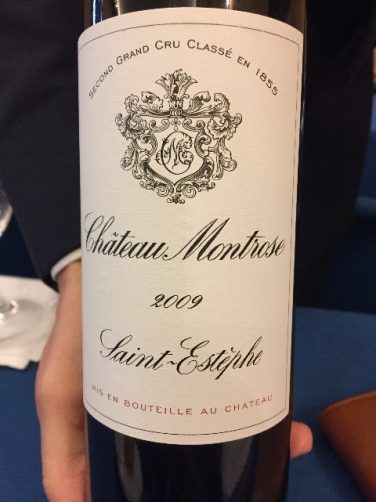 Another enlightening view on the subject was Hervé Berland’s one, who came to expose the environmental approach practiced at Château Montrose. Surprise: it’s a leap into the future happening in this classified growth from Saint-Estèphe! To reduce its carbon footprint, Montrose has indeed built a 3,000 m² photovoltaic park making the domain able to be self-sufficient in electricity (and even more, extra electricity is sold to EDF). At the same time Hervé Berland mentions the installation of a geothermal well, the use of homemade fertilizers, the recycling of CO2 resulting from fermentation for the production of sodium or potassium bicarbonate, none of the latest technological progresses seems to have been forgotten. The goal? Allow Montrose to become 100% organic by 2020. A vision with high technological content, almost lacking of spirit, as François Mauss will emphasize, but nevertheless implemented by a passionate team.
Another enlightening view on the subject was Hervé Berland’s one, who came to expose the environmental approach practiced at Château Montrose. Surprise: it’s a leap into the future happening in this classified growth from Saint-Estèphe! To reduce its carbon footprint, Montrose has indeed built a 3,000 m² photovoltaic park making the domain able to be self-sufficient in electricity (and even more, extra electricity is sold to EDF). At the same time Hervé Berland mentions the installation of a geothermal well, the use of homemade fertilizers, the recycling of CO2 resulting from fermentation for the production of sodium or potassium bicarbonate, none of the latest technological progresses seems to have been forgotten. The goal? Allow Montrose to become 100% organic by 2020. A vision with high technological content, almost lacking of spirit, as François Mauss will emphasize, but nevertheless implemented by a passionate team.
Evolution of the taste of wine
One of the highlights of the conferences that follow one another during this Symposium will be the much awaited one by Axel Marchal (Professor at the University of Bordeaux, author of a thesis on the molecular basis of the sweet taste of dry wines) and Gabriel Lepousez (Doctor in neuroscience and specialist in sensory perception and brain plasticity), dedicated to the evolution of wine taste. We could listen to both of them for hours, as their speech is so smooth and the demonstrations so clear. Difficult to summarize by the way, because the evolution of taste responds to complex influences: viticultural and oenological of course but also related to the expectations of different markets. The two speakers – who are also genuine wine enthusiasts and utter tasters – have sought in all directions anything that could explain the evolution of the style of wines, especially its colour, much clearer in the 18th century than today, as suggested by the artworks of the painters of the time (cf. Le déjeuner d’huître from Jean-François, commissioned by Louis XV and exhibited in Chantilly). They have sought to understand the cause: a higher colouring potential over time because of the pulp, denser today; the increase in sugar, due to global warming, but not only (the carbon dioxide concentration increase plays a role too); the variability of the olfactory, geographical and also cultural genes. We learn that the olfactory system of a child is already mature after the 11th week of pregnancy, and that the olfactory repertoire of the child is built very early, the human species being so made that it is capable of curiosity for diversified and new tastes.
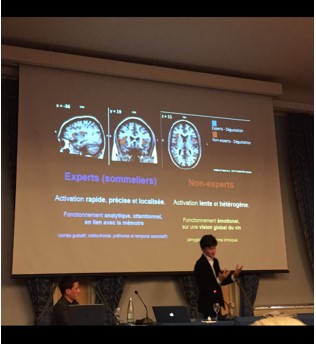
The two researchers also deliver the results of different experiments, including one confirming that wines with a higher sugar level are a priori preferred by amateurs at the first sip, but in the long run those with lower sugar levels are preferred. Moreover, Axel Marchal and Gabriel Lepousez did not fail to note the impact of what they have called the “Sideways effect”, this Oscar-nominated film that has promoted at the highest level the notoriety of Pinot Noir – fresh grape variety for delicate wines – in the Anglo-Saxon world.
Both point out the risk of a loss of diversity of plant material related to the development of resistant grape varieties. Facing this risk of uniformity, the decline in consumption in favour of more qualitative wines, also more expensive and the desire to discover and curiosity are encouraging. Aubert de Villaine will conclude this conference by reminding the absolute necessity to take care of the plant material, fundamental to preserve the identity of a terroir. And the manager of Romanée Conti knows what he’s talking about…
Monumental tastings
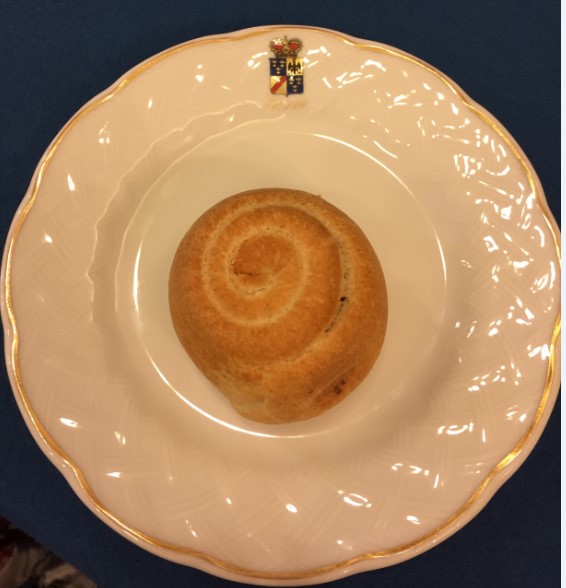
But the Villa d’Este Symposium can’t, under any circumstances, be reduced to a succession of conferences, although they were brilliant! There were several and varied practical works. For example, one of them brought me to the kitchen of the Villa d’Este – which, by the way, serves more than 70,000 meals of incomparable quality over 8 months, a performance that deserves to be noticed-. One day I will make you the meringues for which we were given the secret, let me just practice a little. But let’s go back to wine. A lovely tasting room, laconically called Imperial Room, offers continuously during these three days the wines of different producers taking part in the Symposium. This is how we managed to taste a few treasures – happy to see again the Domaine Belluard, from Savoie, and its incomparable sparkling – but also several monuments. From Alsace, Jean Trimbach brought a beautiful series of his greatest Rieslings, including a rarity, the cuvée Frédéric Emile 2001 in its SGN (selection of noble grapes) version. A wine that has not been produced since then, as climatic conditions have never been optimal again. A complex bouquet and delicately spicy, perfectly light, which leaves on the palate a discreet mark, the wine has however an exceptional long finish. We also trained for the gala dinner, ‘pre-tasting’ the 2011 Clos Sainte-Hune Riesling, admirably straight and precise.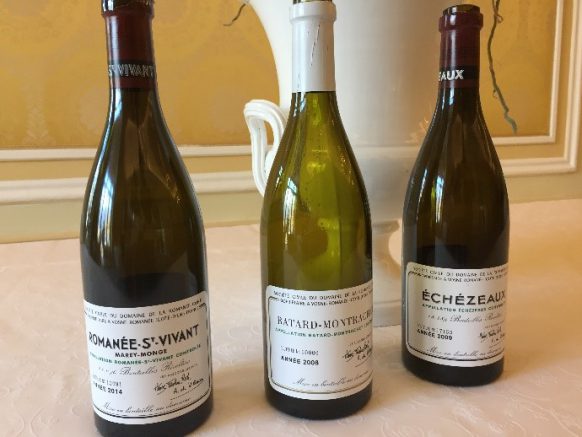 In the series of monuments, there are also the wines from Romanée-Conti. Aubert de Villaine, loyal to his discreet image, opens them without warning, to avoid too many people gathering. It is best to stay close because the bottles empty in a flash. Arrived a few minutes too late, I discover with disappointment three empty bottles. With all the elegance and the generosity of one of the participants, I managed to taste the admirable and extremely rare Batard-Montrachet from the domain. Marvellously balanced, with all the aromas we expect for a great Chardonnay are present, none exceeds or imposes itself, the texture is of an incredible finesse, the length is immense, a great moment that I owe to Olivier Didon (aka Oliv on the French forum La passion du vin), very classy, a huge thank you. So many tastings that it is impossible to tell you all the wines discovered and tasted – and really regret not being able to tell you more about the German Rieslings from Dönnhof and von Winning -.
In the series of monuments, there are also the wines from Romanée-Conti. Aubert de Villaine, loyal to his discreet image, opens them without warning, to avoid too many people gathering. It is best to stay close because the bottles empty in a flash. Arrived a few minutes too late, I discover with disappointment three empty bottles. With all the elegance and the generosity of one of the participants, I managed to taste the admirable and extremely rare Batard-Montrachet from the domain. Marvellously balanced, with all the aromas we expect for a great Chardonnay are present, none exceeds or imposes itself, the texture is of an incredible finesse, the length is immense, a great moment that I owe to Olivier Didon (aka Oliv on the French forum La passion du vin), very classy, a huge thank you. So many tastings that it is impossible to tell you all the wines discovered and tasted – and really regret not being able to tell you more about the German Rieslings from Dönnhof and von Winning -.
A vertical tasting from Armand Rousseau
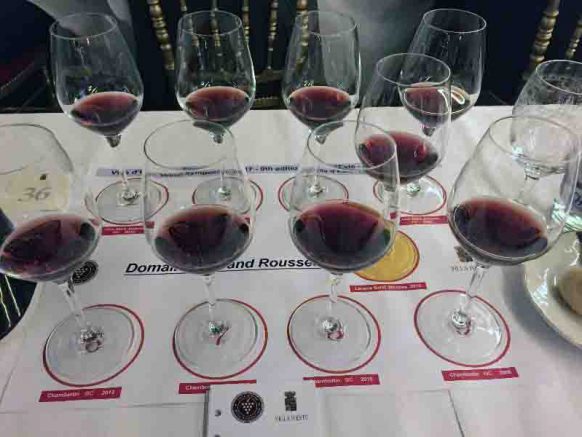 If there is a tasting that we couldn’t not mention, it is the one with wines from Domaine Armand Rousseau. The symposium offers each year several prestige verticals organized with the producer. This is one of them, and a good one: nine wines of this mythical domain on the menu, can you imagine the dream? But beware; the rule of the game is strict: the tasting takes place in a dead silence. Everyone is asked to smell, taste, write their observations in an elegant little notebook, and especially in absolute calm, supposed to help concentration. Intimidating and a little austere at first, but ultimately valuable, considering the immensity of the wines. The opening wine, the one that serves as a “presentation wine” – a Gevrey-Chambertin Lavaux Saint-Jacques 2012 – is already a marvel of freshness, with its very pure nose of Morello cherry, its intense fruit, its tight body and its finish that develops crescendo, a controlled power. Then come four vintages of Gevrey-Chambertin 1er Cru Clos Saint-Jacques, an exceptional opportunity to confront these vintages with very different profiles. The 2012 with smoky notes, slightly toasted, is not fully opened, almost austere but develops a dense, tight body; the 2009 offers a beautiful floral nose and develops on the palate a silky texture and an explosive bouquet of ripe red fruits, in a more massive than vertical body. The 2010 is deployed with remarkable energy – almost electric – absolute elegance, a perfect balance. And finally, the 2006 offers a very classic and slightly spicy nose, a supple body of roasted notes and undergrowth on the finish.
If there is a tasting that we couldn’t not mention, it is the one with wines from Domaine Armand Rousseau. The symposium offers each year several prestige verticals organized with the producer. This is one of them, and a good one: nine wines of this mythical domain on the menu, can you imagine the dream? But beware; the rule of the game is strict: the tasting takes place in a dead silence. Everyone is asked to smell, taste, write their observations in an elegant little notebook, and especially in absolute calm, supposed to help concentration. Intimidating and a little austere at first, but ultimately valuable, considering the immensity of the wines. The opening wine, the one that serves as a “presentation wine” – a Gevrey-Chambertin Lavaux Saint-Jacques 2012 – is already a marvel of freshness, with its very pure nose of Morello cherry, its intense fruit, its tight body and its finish that develops crescendo, a controlled power. Then come four vintages of Gevrey-Chambertin 1er Cru Clos Saint-Jacques, an exceptional opportunity to confront these vintages with very different profiles. The 2012 with smoky notes, slightly toasted, is not fully opened, almost austere but develops a dense, tight body; the 2009 offers a beautiful floral nose and develops on the palate a silky texture and an explosive bouquet of ripe red fruits, in a more massive than vertical body. The 2010 is deployed with remarkable energy – almost electric – absolute elegance, a perfect balance. And finally, the 2006 offers a very classic and slightly spicy nose, a supple body of roasted notes and undergrowth on the finish.
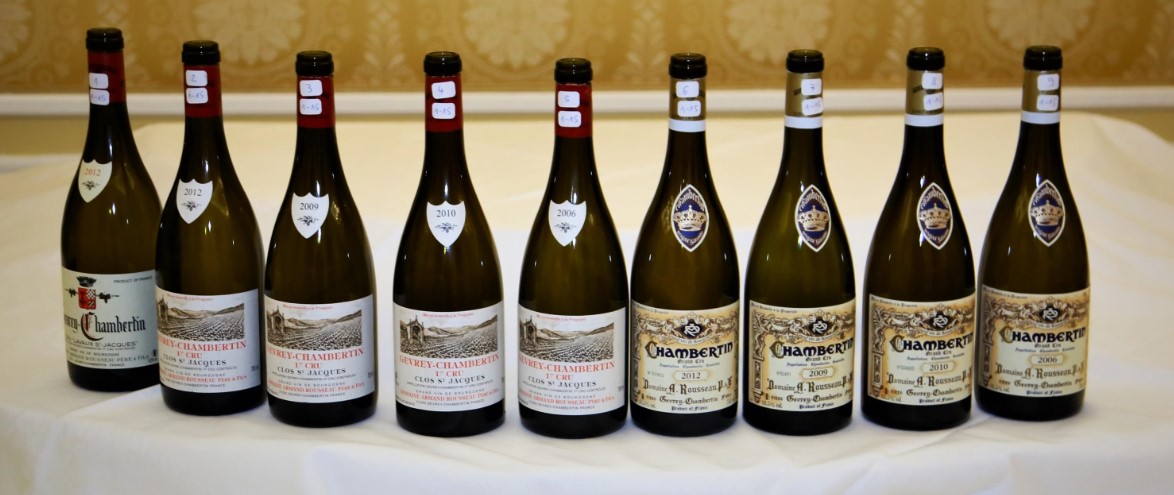 The tension increases a notch when we approach the series of Chambertin. The change of terroir is perceptible; these wines made from 50-year-old vines offer more richness, a much denser and ample texture at the same time, which voluptuously fills the palate with an intensity that contrasts with the more refined Gevrey. The 2012 offers a vibrant bouquet from which spring the intense aromas of crushed raspberry. It’s flamboyant, infinitely elegant. On the palate, the attack is immediately voluptuous, the texture is smooth, rich and intense, the power seems perfectly mastered. We have here a thoroughbred – or a Maserati, a car chosen to take us to both ends of this decidedly memorable weekend – that the brilliant hand of the winemaker has delicately restrained with a supple hand. Then comes the 2010, which offers all of the above, but with an extra layer of elegance. Plenitude of aromas, texture, the right balance between power and velvet, with an infinite length. We would like to keep forever in memory this perfect wine. The 2009 is in line with its vintage: a sunny fruit springs from the glass, fully ripe. The texture is powerful, voluptuous, with no roughness and exceptional length. However, the general expression of the wine is still very compact and not fully opened. At this stage, we can only advise the lucky owners of a 2009 Chambertin not to open it yet, the vintage being still quite closed and relatively less pleasant than its peers. The tasting ends with the delicate 2006: we land softly on a more floral nose, with spicy notes (liquorice). The palate offers a nice freshness, we are dealing with a more peaceful wine – compared to the flamboyant 2009 – more melted, that has reached the age of wisdom.
The tension increases a notch when we approach the series of Chambertin. The change of terroir is perceptible; these wines made from 50-year-old vines offer more richness, a much denser and ample texture at the same time, which voluptuously fills the palate with an intensity that contrasts with the more refined Gevrey. The 2012 offers a vibrant bouquet from which spring the intense aromas of crushed raspberry. It’s flamboyant, infinitely elegant. On the palate, the attack is immediately voluptuous, the texture is smooth, rich and intense, the power seems perfectly mastered. We have here a thoroughbred – or a Maserati, a car chosen to take us to both ends of this decidedly memorable weekend – that the brilliant hand of the winemaker has delicately restrained with a supple hand. Then comes the 2010, which offers all of the above, but with an extra layer of elegance. Plenitude of aromas, texture, the right balance between power and velvet, with an infinite length. We would like to keep forever in memory this perfect wine. The 2009 is in line with its vintage: a sunny fruit springs from the glass, fully ripe. The texture is powerful, voluptuous, with no roughness and exceptional length. However, the general expression of the wine is still very compact and not fully opened. At this stage, we can only advise the lucky owners of a 2009 Chambertin not to open it yet, the vintage being still quite closed and relatively less pleasant than its peers. The tasting ends with the delicate 2006: we land softly on a more floral nose, with spicy notes (liquorice). The palate offers a nice freshness, we are dealing with a more peaceful wine – compared to the flamboyant 2009 – more melted, that has reached the age of wisdom.
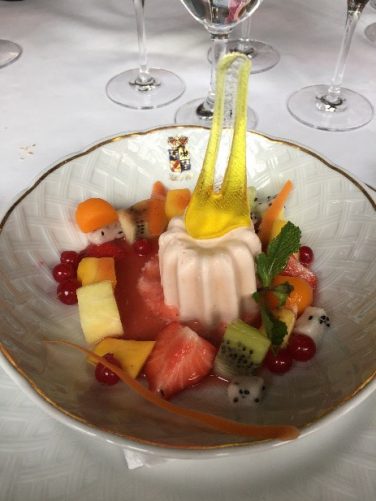 This tasting was a wonderful and unforgettable moment conducted by Cyrielle Rousseau (daughter of Eric Rousseau) that gives us food for thought by concluding with the motto of the house: “Finding the spirit that does great things and that would make others in other times“. After a discussion between participants, Aubert de Villaine concludes with words that suit him: “What is magic with Burgundy, with great wines such as those from Domaine Rousseau, which I know well, is that they are distinctive for their discretion, concentration and transparency.” Discretion, concentration and transparency. Remarkable definition for a Burgundy grand cru, do not you think? As far as I am concerned, I will remember it each time I have the chance to approach one of these mysterious Pinot wines, in the future…
This tasting was a wonderful and unforgettable moment conducted by Cyrielle Rousseau (daughter of Eric Rousseau) that gives us food for thought by concluding with the motto of the house: “Finding the spirit that does great things and that would make others in other times“. After a discussion between participants, Aubert de Villaine concludes with words that suit him: “What is magic with Burgundy, with great wines such as those from Domaine Rousseau, which I know well, is that they are distinctive for their discretion, concentration and transparency.” Discretion, concentration and transparency. Remarkable definition for a Burgundy grand cru, do not you think? As far as I am concerned, I will remember it each time I have the chance to approach one of these mysterious Pinot wines, in the future…
It is impossible to describe in detail all the great moments of this weekend of which the gala dinner is one of the highlights. If you want to know more, the solution is to register without delay for the tenth edition of the Symposium, which will take place from 8th to 11th November 2018. One word to conclude: congratulations to François Mauss who has created a unique event in the world, with exceptional talent as he succeeds in creating an alchemy between participants from very different origins and cultures. Alchemy that worked perfectly, in a warm and relaxed atmosphere. Thanks to all his family who accompanies him with care, attention and delicacy at every moment for each participant. Are we going back together next year?
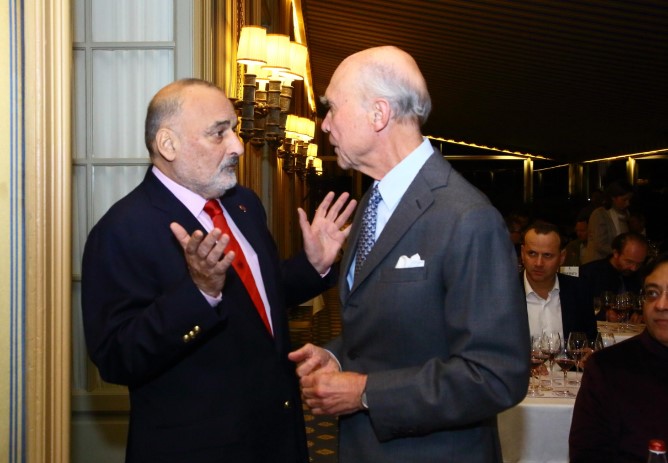
See all wines currently for sale
Register here to access auctions and fixed-price sales
Receive a free estimate of your cellar
Read further on iDealwine Le Blog:

